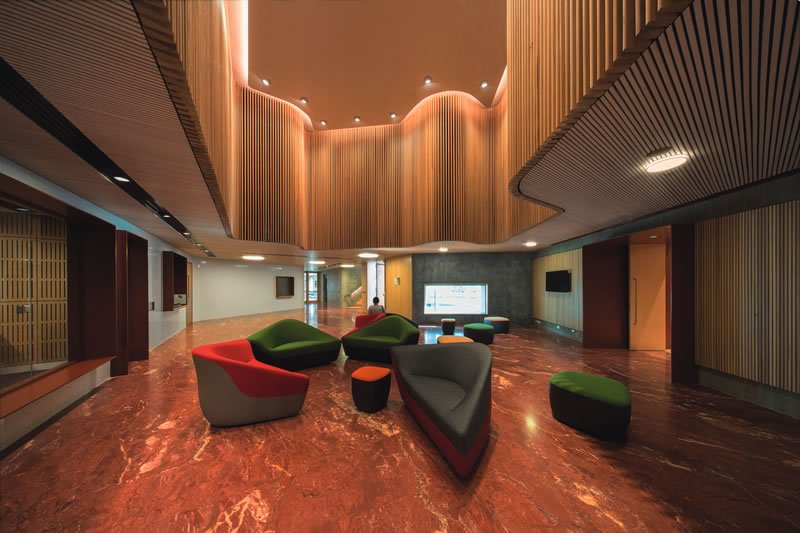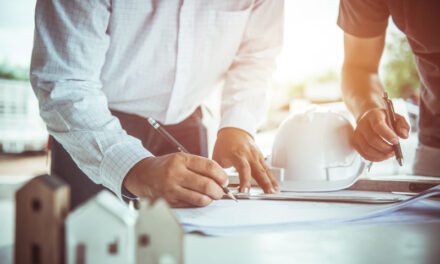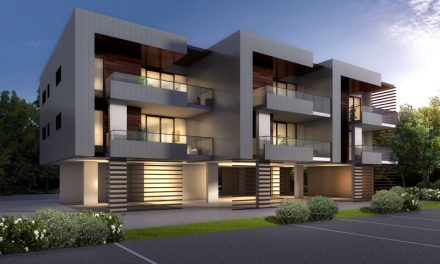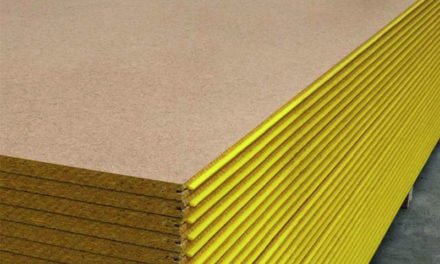The Australian Embassy in Bangkok has won a second major award thanks to its embrace of natural materials and traditional architectural motifs.
With its monumental red brick curves standing tall in central Bangkok, the new Australian Embassy, by BVN, has a touch of Uluru as it rises above the surrounding moat, greenery and bridges that link it to its residence and support buildings.
But while the outside might evoke the famous sacred monolith, the inside has an altogether different flavour, more like the inside of a eucalypt forest, the trunks of which the building also recalls. It’s a beautiful and pleasant place, with water and inbuilt ventilation creating a natural cooling system in the city’s humid weather, while timber, stone and concrete surfaces combine to form spaces that are in turn canyon-like, comforting and inspiring.
It’s a building filled with clever references, linking Thai and Australian symbolism, yet every part of it is also utterly practical – a whole raft of security measures are hidden within its seemingly tranquil approaches and the unusual shapes and levels of windows and openings are designed to confound snipers in an absolutely worst-case scenario. Spacious public areas inspire a collegiate style of communication for workers, while a set of smaller rooms allow privacy with multiple levels of formality for the other side of the embassy’s mission.
With this ideal combination of form and function, it was no surprise when the building won the Jørn Utzon Award for International Architecture at the Australian Institute of Architects (RAIA) National Awards, announced on 1 November, 2018.
“It’s an honour to design an embassy for one’s country – it will stand for decades as a symbol of the culture and sensitivities of Australia,” said BVN Principal James Grose on receiving the gong.
Now that win has been followed by another, with the design winning the Civic, Culture & Transport category at the INSIDE World Festival of Interiors, run as part of the World Architecture Festival in Amsterdam.
Of course, the interior of the embassy is special precisely because it does not appear to define itself as an interior. Light flows unimpeded throughout passageways and the building’s large spaces, softened by glass planks with varying translucency and opacity, bouncing off water that flows through the ground floor.
In his Architecture Australia review of the embassy, Professor Tom Heneghan described it as “a building from another time” and there is a strong sense of traditional Thai airy temple architecture, along with just a touch of the classic Aussie sunroom.
Blackbutt and other timbers are repeated through the building, along with Pilbara red stone floors, bringing a humanising sense of warmth to a workplace that will frequently be encountered by people who are far from home.
Judged by leaders in the field, including Nigel Coates, Christopher Brandon of Perkins+Will and Päivi Meuronen of JKMM Architects, the INSIDE award recognises the highest levels of design, both in terms of material usage and the human experience of the building. BVN’s work beat out internationally feted projects including the LEGO house in Billund, Norway’s Bergen Airport and the luxe Venice Simplon-Orient-Express.
While the other shortlisted projects showed sophisticated and elegant materials use, BVN’s design went a step beyond, tying the entire construction to its site, to both aesthetic and practical ends. As Heneghan wrote: “As is typical in traditional Thai architecture, both exterior and interior spaces are animated by water, with evaporation mitigating high air temperatures and sunlight reflecting off pools to brighten ceilings and the undersides of canopies.”
“It is a tremendous confidence booster for Australian architects, to have Australian designs being recognised at the highest levels internationally,” said Grose.
The awards capped off a successful year for the vibrant studio, with other projects attracting major awards and a successful collaboration with renowned Danish architecture firm 3XN on the winning design for the new Sydney Fish Market. For more details, visit http://www.bvn.com.au
Image: The embassy’s chancery lobby with imported Pilbara red stone floors and blackbutt panelling. (Photo by John Gollings)











